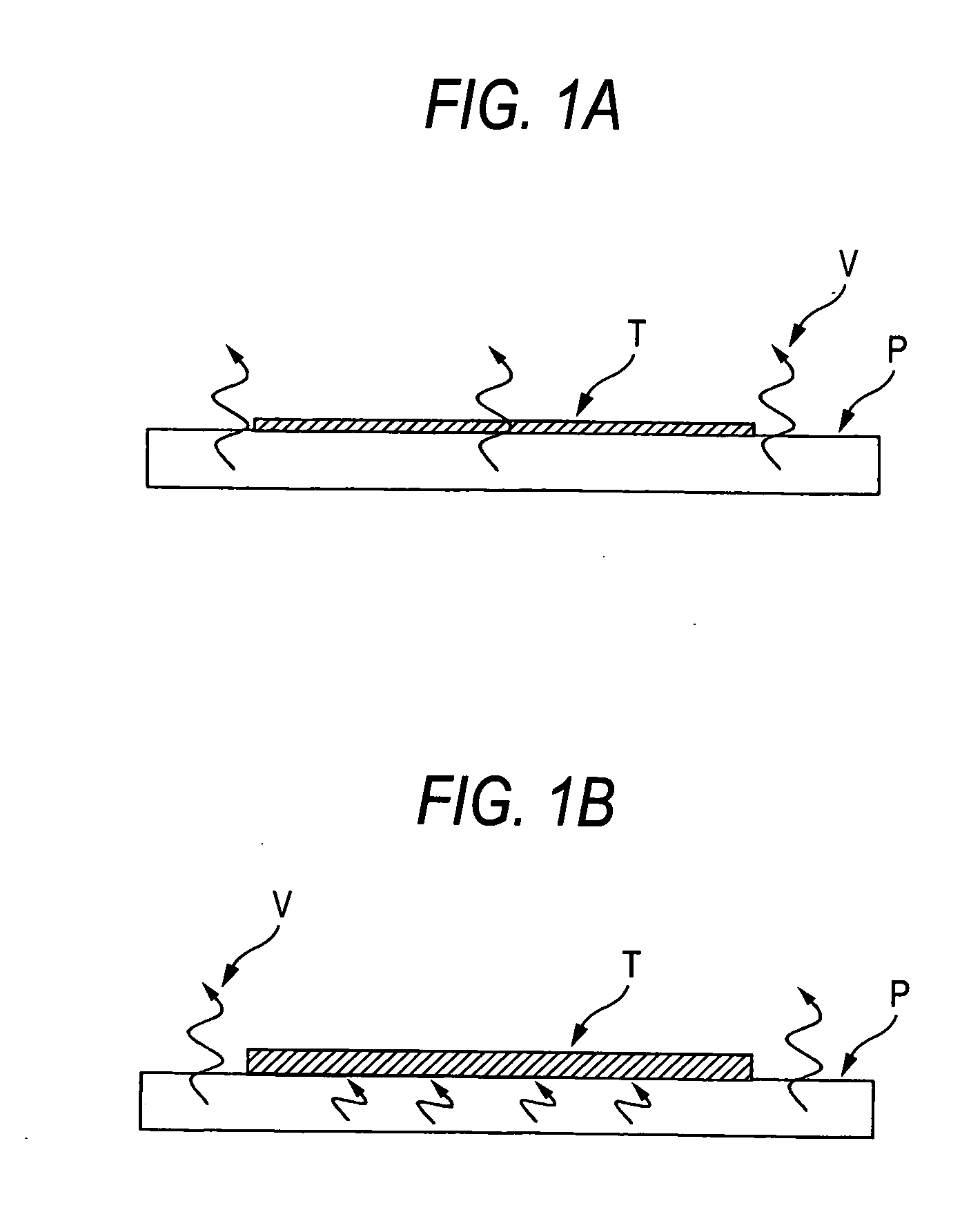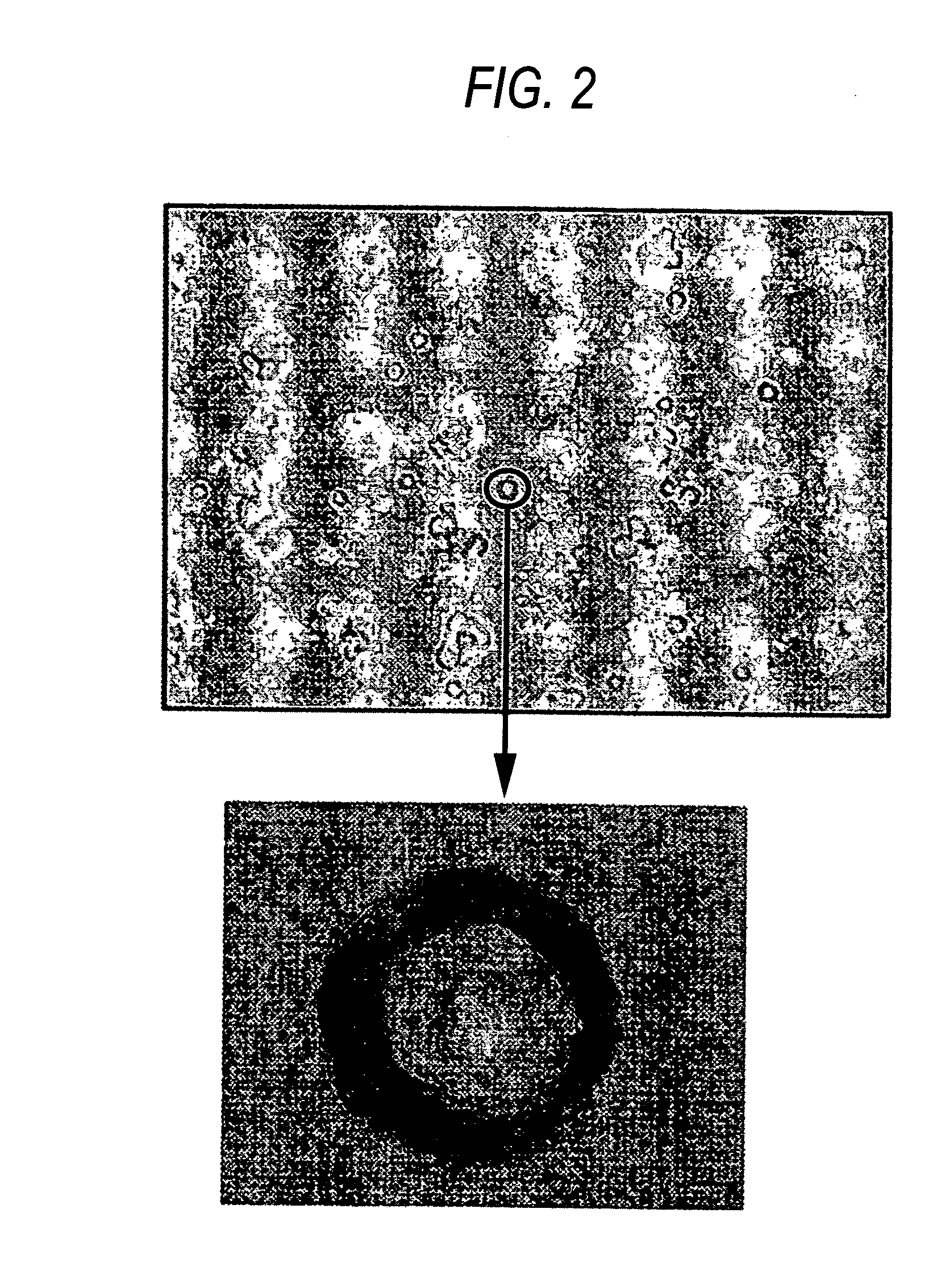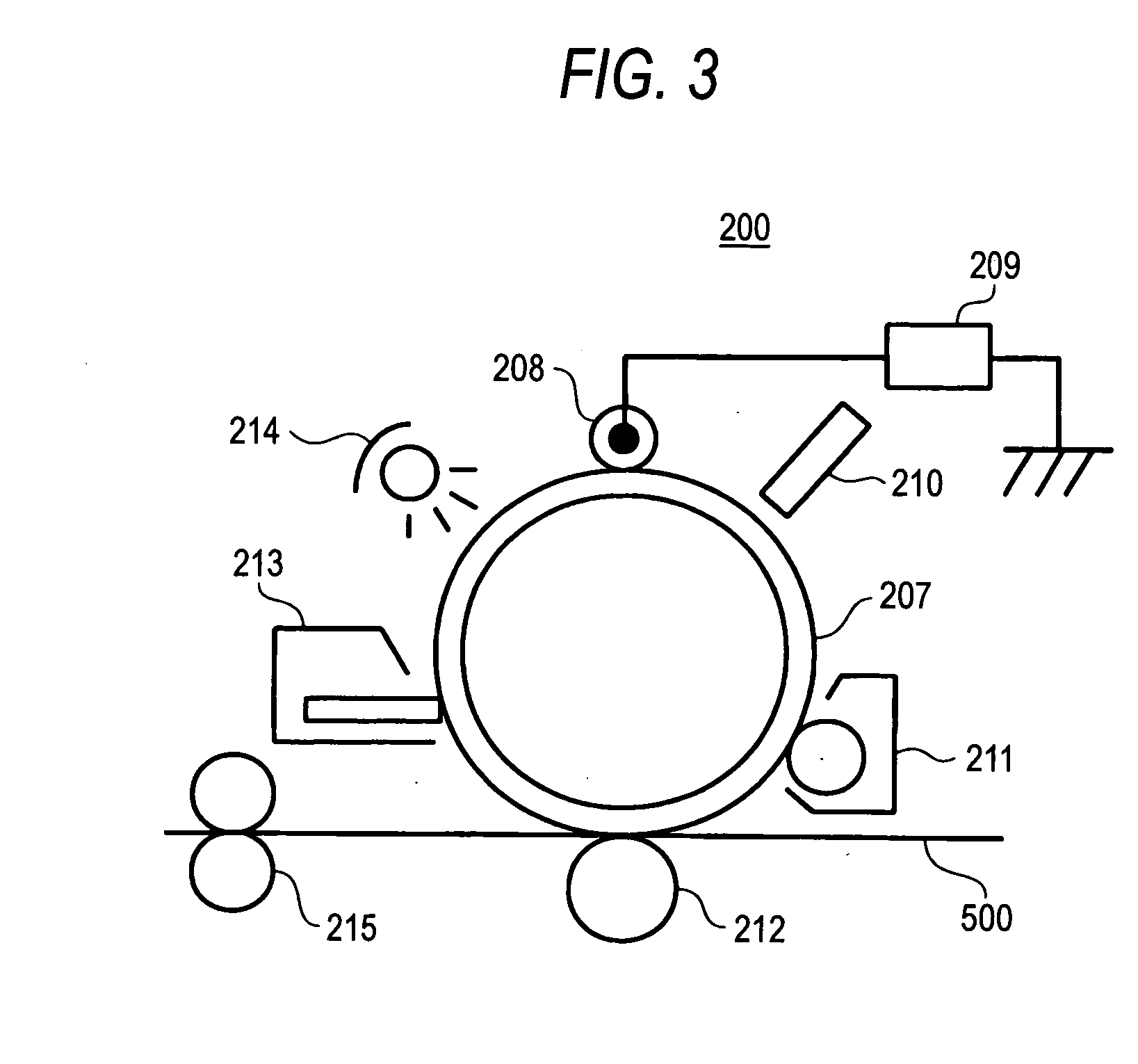Image forming method
a technology of image and forming method, which is applied in the direction of instruments, electrographic process equipment, developers, etc., can solve the problems of insufficient flowability of toner, formation of further powder and changes in toner shape, and difficult control of shape and surface structure of toner, etc., to achieve excellent fixing properties, stably forming color images, and less roughness in images
- Summary
- Abstract
- Description
- Claims
- Application Information
AI Technical Summary
Benefits of technology
Problems solved by technology
Method used
Image
Examples
example 1
[Preparation of Crystalline Toner Particles (1)]
[0181] (Preparation of Crystalline Toner Particles)
Crystalline resin particle 331 parts by weightdispersion liquid (1)(resin: 33.1 parts by weight)Amorphous resin particle 52 parts by weightdispersion liquid (1)(resin: 21.84 parts by weight)Colorant particle dispersion39.5 parts by weightliquid (1)(pigment: 8.5 parts by weight)Releasing agent particle38.1 parts by weightdispersion liquid(releasing agent: 8 parts by weight)Polyaluminum chloride0.14 part by weight
[0182] The aforementioned components are sufficiently mixed and dispersed in a stainless steel round-bottom flask by using a homogenizer (Ultra-Turrax T50, produced by IKA Works, Inc.). The content of the flask is then heated to 43° C. over a heating oil bath under stirring the content and maintained at 48° C. for 60 minutes. 68 parts by weight (resin: 28.56 parts by weight) of the amorphous resin particle dispersion (1) is then gradually added and stirred. Thereafter, the t...
example 2
[Preparation of Crystalline Toner Particles (2)]
[0188] Crystalline toner particles (2) are obtained in the same manner as in the preparation of the crystalline toner particles (1) except that the crystalline resin particle dispersion liquid (1) is changed to the crystalline resin particle dispersion liquid (2), the colorant particle dispersion liquid (1) is changed to the colorant particle dispersion liquid (2), and the pH upon heating to 95° C. is maintained at 4.0, in Example 1.
[0189] The crystalline toner particles have a volume average particle diameter D50 of 4.30 μm, a volume average particle diameter distribution index GSDv of 1.20, and a surface property index of 1.42. The shape factor SF1 thereof is 120, which indicates a spherical shape.
[0190] An externally added toner is obtained by using the crystalline toner particles thus obtained, and then a developer is prepared therefrom, in the same manner as in Example 1.
example 3
[Preparation of Crystalline Toner Particles (3)]
[0191] Crystalline toner particles (3) are obtained in the same manner as in the preparation of the crystalline toner particles (2) except that the crystalline resin particle dispersion liquid (2) is changed to the crystalline resin particle dispersion liquid (3), the colorant particle dispersion liquid (2) is changed to the colorant particle dispersion liquid (3), the amount of the colorant particle dispersion liquid is increased by 0.5 part by weight, the maximum temperature for aggregation is changed to 42° C., and the pH upon heating to 95° C. is maintained at a constant value of 3.8, in the preparation of the crystalline toner particles (2).
[0192] The crystalline toner particles have a volume average particle diameter D50 of 4.2 μm, a volume average particle diameter distribution index GSDv of 1.18, and a surface property index of 1.30. The shape factor SF1 thereof is 118, which indicates a spherical shape.
[0193] An externally ...
PUM
 Login to View More
Login to View More Abstract
Description
Claims
Application Information
 Login to View More
Login to View More - R&D
- Intellectual Property
- Life Sciences
- Materials
- Tech Scout
- Unparalleled Data Quality
- Higher Quality Content
- 60% Fewer Hallucinations
Browse by: Latest US Patents, China's latest patents, Technical Efficacy Thesaurus, Application Domain, Technology Topic, Popular Technical Reports.
© 2025 PatSnap. All rights reserved.Legal|Privacy policy|Modern Slavery Act Transparency Statement|Sitemap|About US| Contact US: help@patsnap.com



